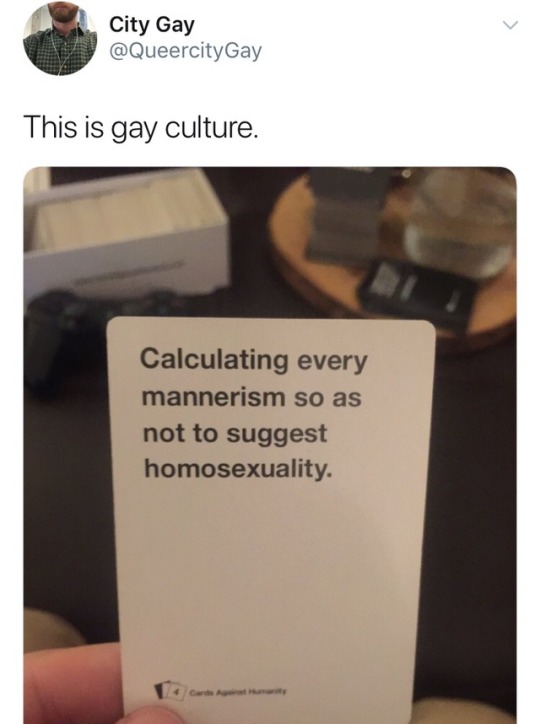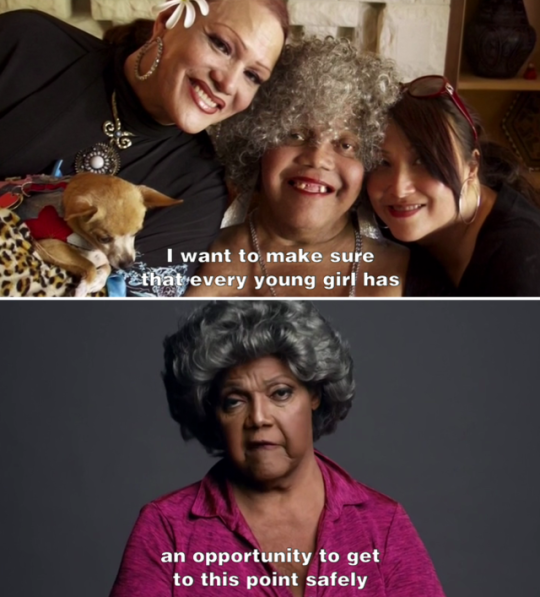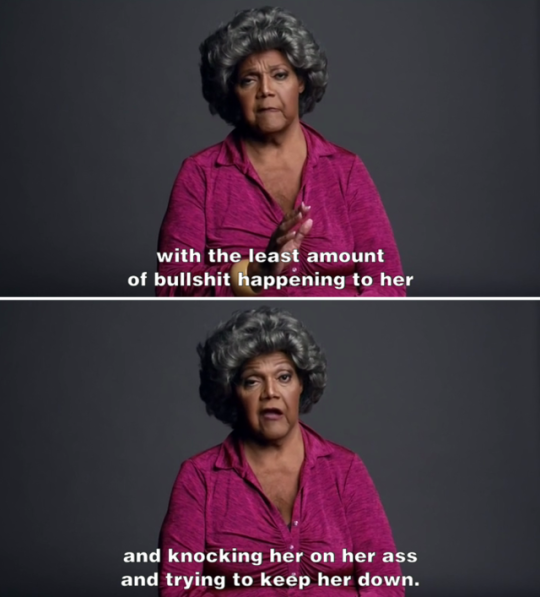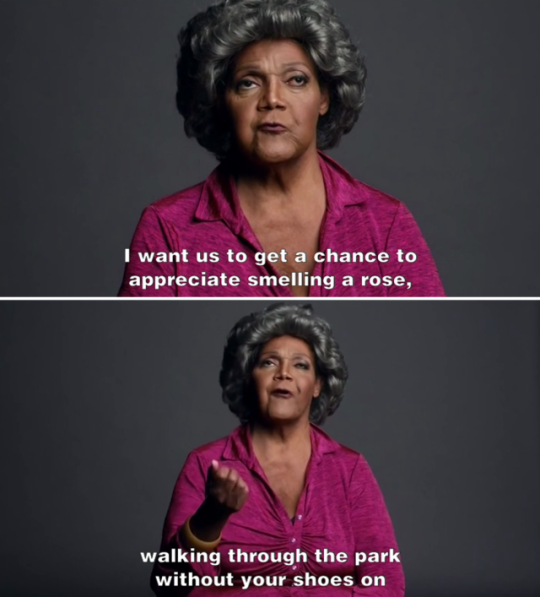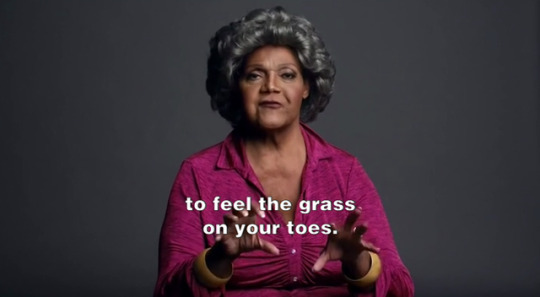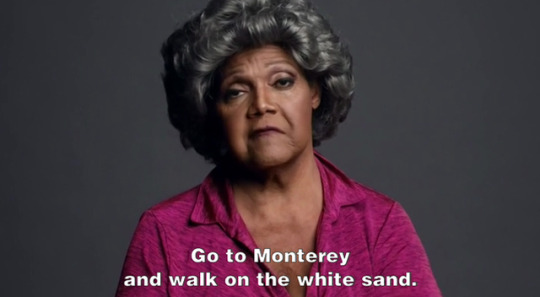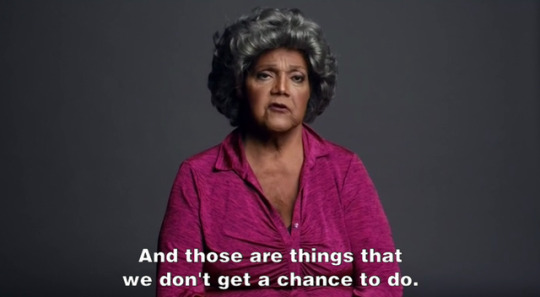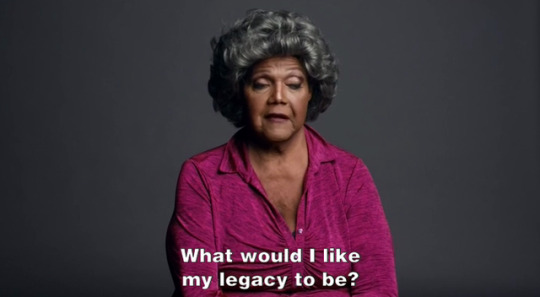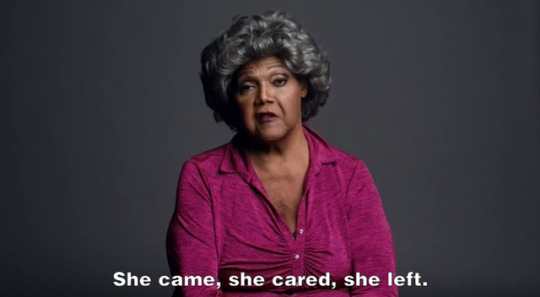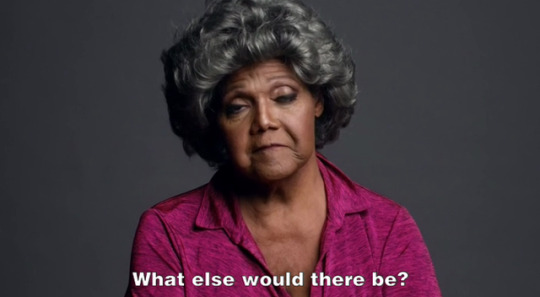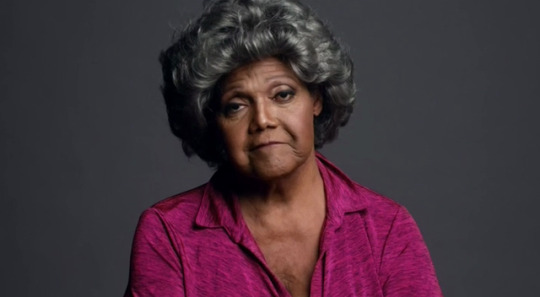"Music is the place I reclaim my relationship towards my body" A blogspot crossover between educational resources for trans and non-binary folks, and my narrative as a musician and aspiring music educator
Don't wanna be here? Send us removal request.
Text
My gender is finding out that there are actual scholarly articles on non-binary experiences and language and reading 75+ pages of non-binary themed scholarly writing in one sitting
199 notes
·
View notes
Video
youtube
#student teaching#professional development#timmie flock#trans#non-binary#genderqueer#agender#genderfluid#LGBTQ#queer#nafme#wmea#trans advocacy#life update#vlog
3 notes
·
View notes
Video
youtube
A Genderqueer Sound World: Transgender Advocacy in Music
#a genderqueer sound world#transgender advocacy in music#trans#non-binary#genderqueer#agender#genderfluid#LGBTQ#queer#timmie flock#music education#music composition#music performance#fka twigs#frank zappa#captain beefheart#bjork#kate bush#joni mitchell#my brightest diamond#the residents#oingo boingo#david maslanka#igor stravinsky#claude debussy#franz schubert
7 notes
·
View notes
Video
youtube
Transgender Discussion and Music: A Non-Binary Voice
#nafme trans inclusion project#trans#non-binary#genderqueer#agender#genderfluid#LGBTQ#queer#transgender discussion and music#a non-binary voice#trans advocacy#lecture#presentation#activism#timmie flock
5 notes
·
View notes
Photo
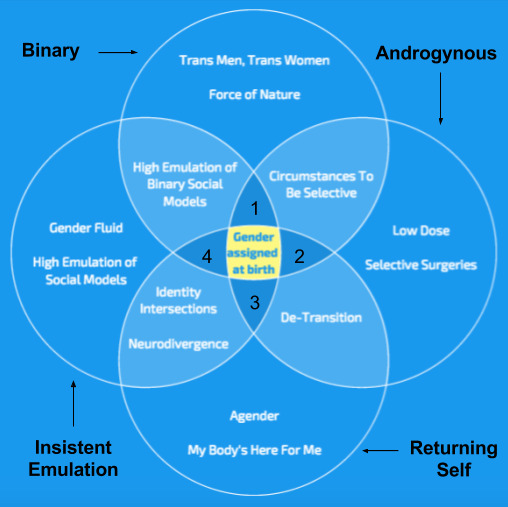
Variations in the Gender Spectrum: A Psycho-Social Theory
“Gender Assigned At Birth”
The single facet that covers all areas of transgender experience is that there is a “disconnect from gender assigned at birth.” The disconnect ranges through several aspects: biological, physical, social, cultural, and/or psychological.
What varies for trans people is how they are disconnected, and how a trans person becomes reconnected towards a sense of self embodiment/perception. There is high variation in how trans people become reconnected, but there is a lot of overlap in the variations for disconnect.
Through understanding many of the ways trans people can be disconnected from gender assigned at birth, we can start to understand the concept of gender in more vast ways from how it’s been traditionally understood in feminism. Gender has been understood traditionally by feminists as directly pertaining to sex, and that women are oppressed on the basis of their reproductive functions. There is comparatively the more subtle view on gender that believes it is the institutional sexual dominance of women by men. From a queer and trans perspective, gender can be understood as performance and sets of imitative behaviors, or even psychological states of belonging towards certain physical embodiments.
A fuller, more nuanced perspective of gender can take in all these definitions, especially when advocating in different areas of gender justice. It makes sense to take a perspective of gender around the basis of reproductive functions or institutional dominance of women by men when advocating for abortion and reproductive rights, ending sexual harassment and assault against women, and closing the gender wage gap.
However, the latter definitions must be taken into account when advocating for trans and queer inclusion. There are lots of cis women that face gender based oppressions, but they do not experience the oppression as to define it as a “disconnect from gender assigned at birth.” Cis women typically do not go through the life experience that a lot of trans women go through, (such as changing one’s names or pronouns, or all the way to hormone-replacement-therapy and gender affirming surgeries,) because of the ways men have oppressed them. Likewise, even though ending sexual harassment and closing the gender wage gap may have traditionally come from fighting against this institutional dominance, trans people suffer from a disproportionate amount of sexual harassment and job discrimination. When advocating for gender justice from a trans and queer perspective, it’s important to realize that trans women are also women, whether they define their gender as a deeply psychological feeling towards female embodiment, or being deeply and profoundly drawn towards performing the sets of behaviors associated with women.
#wmea#trans#non-binary#genderqueer#agender#genderfluid#timmie flock#variations in the gender spectrum#a psycho-social theory#gender assigned at birth#gender dysphoria
5 notes
·
View notes
Text
Please reblog if you think that “they/them/theirs” is a valid set of pronouns.
603K notes
·
View notes
Photo
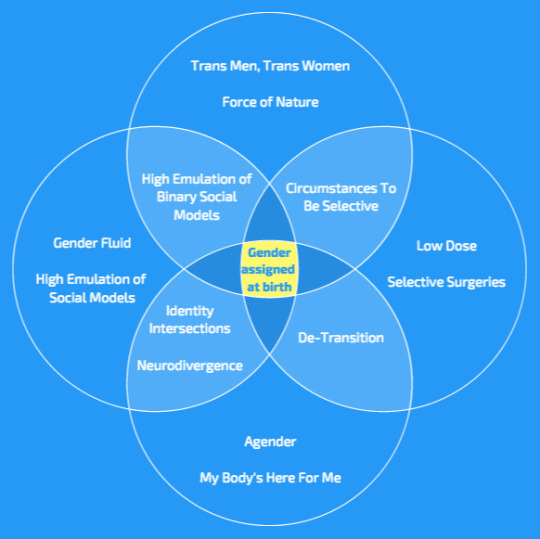
I am doing a writing called "Self-Perceptions in the Gender Spectrum: A Psycho-Social Theory," and I am going to posts sections from the rough draft to this page and make it a series.
This is an in-depth attempt to create a framework for educators and cis gender people about the diversity in gender.
This will be a writing in my WMEA/NAfME Packet, and I might submit it for a "Wetlands" blog post.
Introduction:
Gender has been referred to as a “spectrum.” This is accurate and appropriate terminology to apply towards the phenomenon of transgender experience. The only problem is that there are people that have connotations with the word “spectrum” as being too broad, frivolous, and all-encompassing. This leads to points and experiences in a spectrum that will be ignored and neglected, because they are seen as either too universal in human nature, or even the opposite: too different and idiosyncratic.
Autism is also referred to as a “spectrum.” The same problems with speaking about autism as a spectrum are also found with speaking about gender as a spectrum. How can you put the millionaire, innovative genius with Asperger’s under the same category with the ten-year old diagnosed with autism who can barely speak, moves repetitively, and strongly resists being taken out of a ritualistic daily schedule? Likewise with transgender experience, how can you put the genderqueer person who is designated male at birth, has developed a positive relationship with their body without HRT, and finds fulfillment, success, and beauty with writing, television production, and a flamboyant fashion sense... under the same category of the trans girl with crippling body dysphoria, struggling with self-confidence and even learning development?
There are reasons we refer to autism and gender as spectrums. The connotation of “broad” is true, because both autism and gender are phenomenons. Still no one really knows the exact cause for either experiences, and theories have generally referred to a mix of causes under biological, genetic, social, and environmental origins.
However, when you accept autism and gender for the spectrums that they are, you do find several crossovers in experiences. You can find many points on the spectrum that help draw a clearer picture. When you take the time to inform and educate yourself about the spectrums, you can find ways to better advocate for everyone in the picture, regardless of their variety in experiences.
The connotation of “all-encompassing” is also true. Very often, people with ASD and transgender people play very important and pivotal roles in society if they are allowed to simply be themselves. Many historical icons and innovators were nowadays thought to have ASD. Being trans is not a mental illness, and in many cultures transgender people played significant roles in family, community, and spirituality. It goes to show that even with these differences, general acceptance and inclusivity of people with ASD and transgender people brings everyone to better understand their own humanity.
There is no one-way to be trans, as gender is a spectrum. It is my goal, when advocating for trans experience, to always enforce this reality. With this being said, I also believe that there is no reason we can’t try to draw representations and theories of the spectrum. We should be able to come up with frameworks that take upon the challenge to simultaneously create points on the spectrum, give voice to a variety of experiences, and leave flexibility for further discussion, exploration, study, improvement, and expansion.
Pictured above is a Venn Diagram I created that takes on this challenge. This is a Venn Diagram not written from the perspective of a psychologist, anthropologist, historian, or a medical doctor. However, it is one that is written from the perspective of a musician and aspiring educator. It is written from the perspective of a non-binary and genderqueer person, who has spent time with queer youth, researching into the subject, personal experiences with gender identity, and listening to the perspectives of other trans people.
The central focus of this Venn Diagram is gender identity in relation to “self embodiment” and “self perception.” “Self embodiment/perception” is an idea that I can approach as a musician, educator, and creative person. Teaching and music are both very personally invested crafts that continuously circle around the question of self embodiment/perception, to better help you connect with other humans and individuals.
The four circles take on four categories of “self embodiment/perception” within trans experience. Two of the categories are specifically about physical body aspects of trans experience: “binary self embodiment” and “androgynous self embodiment.” The other two are specifically about social, cultural, and psychological aspects of trans experience: “returning self perception” and “perception within insisting others.”
The goal of this Venn Diagram isn’t to provide a final answer to the phenomenon of trans experience. Instead, it seeks to give voice to a diversity of experiences of the gender spectrum, leave room for other narratives to join, and expand towards future frameworks that are better to work with.
#gender spectrum#timmie flock#trans#non-binary#genderqueer#agender#genderfluid#autism spectrum#Aspergers#LGBTQ#queer#prose#education#trans advocacy
4 notes
·
View notes
Quote
It's 2017, man. I don't know what gender I am. I listen to synth wave. Let's do some dabs. It's fucking 2017, man.
Contrapoints
38 notes
·
View notes
Link
#PowerPoint#WMEA#NAfME#trans advocacy#activism#teacher#music teacher#clinic#presentation#trans#non-binary#genderqueer#agender#genderfluid#LGBTQ#queer#timmie flock
0 notes
Video
youtube
#anohni#cut the world#Antony hegarty#out of this binary#trans#non-binary#timmie flock#genderqueer#agender#genderfluid#antony and the johnsons#LGBTQ#queer
1 note
·
View note
Video
youtube
#timmie flock#trans#non-binary#genderqueer#agender#genderfluid#LGBTQ#queer#grammar#pronouns#they/them pronouns#they/them/theirs#school teacher#student teaching
1 note
·
View note
Text
The Grammatical Case for “They/Them” Pronouns
My next semester I am doing my student teaching intern at Peninsula High School in Gig Harbor, WA. I will be in the band department with Mr. Justin Ehli. Mr. Ehli’s classroom and school district is very supportive and welcoming of LGBTQ people.
Since I am a trans, non-binary, and genderqueer person, the students will not be calling me by Mr. Flock or Ms. Flock, nor will they be calling me by “he/him/his” or “she/her/hers” pronouns. I will go by the title Teacher Flock and by “they/them/theirs” pronouns.
Some non-binary people go by the honorific Mx., which is short for Mix or Mixture. I like the idea of using this honorific on paperwork and forms, but I have strange feelings about being addressed this way by my students. The honorific in conversation has odd connotations that I don’t feel comfortable embracing. I am a lot more fond of Teacher Flock. It’s straightforward, polite, not showy, and far more gender neutral.
I am also very fond of the pronouns “they/them/theirs” being used to address me, as compared to other neo pronouns that trans and non-binary people use: “ey/em/eirs,” “fae/faer/faers,” “xe/xem/xirs,” etc. While “they/them/theirs” are the only pronouns people should use for me, I understand how this language may be confusing at first. I am anticipating that there will be students and faculty at Peninsula High School that are confused.
However, these honorifics and pronouns are important and an essential part of me that I want people in my intern (and future career) to understand. I am patient of students and faculty that accidentally misgender me occasionally, and are making an honest effort to use my honorifics and pronouns.
But even with this patience, being misgendered will always have an unpleasant effect on me. On my worst days, being misgendered: causes me to struggle with feelings of mental dissociation, personal offense, and depression. On my best days, being misgendered: negates me, feels unprofessional, and even confuses me. In some situations, I will hear “he/him/his” pronouns being used to address me, and not be sure if the person is actually talking towards me. It is important to note that I have always felt this way, for as long as I can remember.
While the request for this language can lead people to accusations that I am asking for special attention, this response is misguided. This language is all about being polite and treating me with respect, just like it is respectful to call other people who aren’t transgender their honorifics of Mr., Mrs., or Ms. and their pronouns “he/him/his” or “she/her/hers.” If a non-transgender person were being misgendered for a long period of time, I am sure they would experience many of the same feelings I have experienced when being misgendered.
Addressing me properly is not only personal, but it is also professional. I’ve learned a lot about developing my own pedagogy in teaching from developing understanding around my gender identity. Even if non-transgender teachers don’t understand “feeling like a gender” themselves, I still believe there are aspects of their gender identity they have learned about that applies to their pedagogy that they maybe take for granted.
All in all, gender identity is far more about the clothes I wear. It deals with how I understand my body, how I engage and interact with people on an interpersonal level, discrimination and harassment I’ve received from institutional and societal structures in the past, and struggles I’ve had to overcome. All of this is acknowledged, affirmed, normalized, and accepted through proper honorifics and pronouns. When there is a school district that cares about being supportive of trans and queer folks and openly questions what they can do for them, it is the most simple yet very effective move to use proper honorifics, names, and pronouns.
In light of my understanding of the pronouns “they/them/theirs” being confusing for some people, I wanted to address the grammatical case for “they/them/theirs” pronouns to counter this confusion.
Ambiguity and Context Reappropriation #1: Plural → Singular
One common objection to “they/them/theirs” pronouns being used to address a singular person is that the pronouns can only be used in plural contexts: when addressing two or more people. I often hear this through people of an older generation, who had this grammatical rule taught towards them.
While this may have been a grammatical rule in the past, it has been an awkward and imperfect one to use for addressing a singular person in a sentence of unspecified gender. What this rule enforces is addressing the options in the binary model in the sentence, such as “he/she,” “he or she.”
“The biker over there? He or she beat me in the race.”
“I heard about that college student. He or she is struggling with debt. He or she is also struggling with his or her classes.”
Through these examples, the awkward flow of these sentences is present through having to address the options in the binary model. It makes the sentence lack coherence.
Often a counter to this objection is that “they/them/theirs” can, in fact, be used to address a singular person and that you are probably using the pronoun in singular contexts without even realizing it. This counter holds up, and even people that have acknowledged their own generational gap I believe have used the pronoun in singular contexts without even realizing it.
Even if there is a person addressing the binary model in the sentence, such as “he/she,” “he or she,” I don’t think I’ve ever come across a person that has used such an awkward sentence as in the last sentence in the second example. I believe I’d be way more likely to hear something like “He or she is also struggling with their classes” than the former. In this example, they are still addressing the binary model, and avoiding a singular/plural ambiguity. But the singular/plural ambiguity is being avoided moreso through not using the verb “are” instead of the pronoun “they.” “They are struggling…”
I believe the sentence would be more likely to occur as “...struggling with their classes” near the end than “...struggling with his or her classes” near the end, because 1. the binary was already addressed near the beginning of the sentence, and 2. absence of the verb “are” takes away a lot of the singular/plural ambiguity.
Through my perception, the sentence flows much better using singular “they/them/theirs” to replace “he/she,” “he or she.” Even if the verb “are” creates more ambiguity, I think it is easily compensated for the flow of the sentence and the direct sentence specifically addressing the singular context.
“The biker over there? They beat me in the race.”
“I heard about that college student. They are struggling with debt. They are also struggling with their classes.”
Trans and non-binary people using “they/them/theirs” maybe makes it so these pronouns are being used more often than they would have been used before. This possible fact makes it a challenge for some people. However, trans and non-binary people have evolved towards this language, as they appreciate the lack of specificity in gender from the pronouns, and the ambiguities between singular/plural works to the favor of their context.
While one trans/non-binary person going by “they/them/theirs” is a singular person, the ambiguity with the plural context makes sense. It works in that they probably feel they have been socialized like they are two or more people, through how they’ve experienced managing masculine and feminine social constructs. Everyone has aspects of masculinity and femininity inside of them, but the constructs of masculine/feminine for one trans/non-binary person has been powerful, personal, and different in their life, often in how they experience working through gender dysphoria, their everyday social life, and institutional structures. A trans/non-binary person going by “they/them/theirs” wants to hear that ambiguity between the singular/plural context working towards their favor.
Ambiguity and Context Reappropriation #2: Unfamiliar → Familiar
There is another objection to “they/them/theirs” pronouns that I often don’t hear addressed very often, but I feel is a common barrier for people new with the language. This objection is that the pronoun in singular contexts can only be used for people that you are not familiar with, and is language that is impersonal.
“The biker over there? They beat me in the race.”
“I heard about that college student. They are struggling with debt. They are also struggling with their classes.”
In these contexts, it is assumed that we are not giving the person the pronoun “he” or “she,” because we do not know how to specify their gender. Often people will assume we are addressing the person as such because we don’t know them personally and they are unfamiliar to us.
However, you are still able to use these pronouns even for people that are familiar and personal to you. The only developed rule behind these pronouns isn’t necessarily that they are a stranger or unfamiliar person of unspecified gender, but simply a person of unspecified gender.
“Hey Dean, please think about the average college student in your School of Engineering right now. They are struggling with debt. They are also struggling with their classes.
In this edit of the second example, there is a possibility that the Dean of the School of Engineering knows these students and does not regard them as strangers or as people that are unfamiliar. However, in this context, the person addressing the Dean is wanting to address the average college student in the department, and wanting to set a singular model representing the majority of students experiencing debt and struggles in the classroom. Gender doesn’t need to be specified in this context, even though the speaker is addressing a singular model with “they/them/theirs.”
Again, trans and non-binary people using “they/them/theirs” maybe makes it so these pronouns are being used more often than they would have been used before. This possible fact makes it a challenge for some people. However, trans and non-binary people have evolved towards this language, as they appreciate the lack of specificity in gender from the pronouns, and the ambiguities between familiar/unfamiliar works to the favor of their context.
While one trans/non-binary person asking to go by “they/them/theirs” may be interacting with you on an interpersonal, familiar level, the ambiguity with the unfamiliar context makes sense. It works in that they probably feel they have been socialized into gender constructs that feel unfamiliar and strange to them, through how they’ve experienced managing masculine and feminine social constructs. Everyone has aspects of masculinity and femininity inside of them, but the constructs of masculine/feminine for one trans/non-binary person has been powerful, personal, and different in their life, often in how they experience working through gender dysphoria, their everyday social life, and institutional structures. A trans/non-binary person going by “they/them/theirs” wants to hear that ambiguity between the familiar/unfamiliar contexts working towards their favor.
#trans#non-binary#they/them/theirs#music education#school teacher#enby#genderqueer#agender#genderfluid#pronouns#grammar#LGBTQ#queer
3 notes
·
View notes
Link
Cooler formatting and cooler pictures!
#trans#non-binary#genderqueer#agender#genderfluid#trans woman#trans man#sylvia rivera#marsha p johnson#susan stryker#miss major griffin gracy#reed erickson#christine jorgenson#sandy stone#mario martino#anohni#alok vaid-menon#laverne cox#tyler ford#bamby salcedo#kylar broadus#iO tillet wright#janet mock
0 notes
